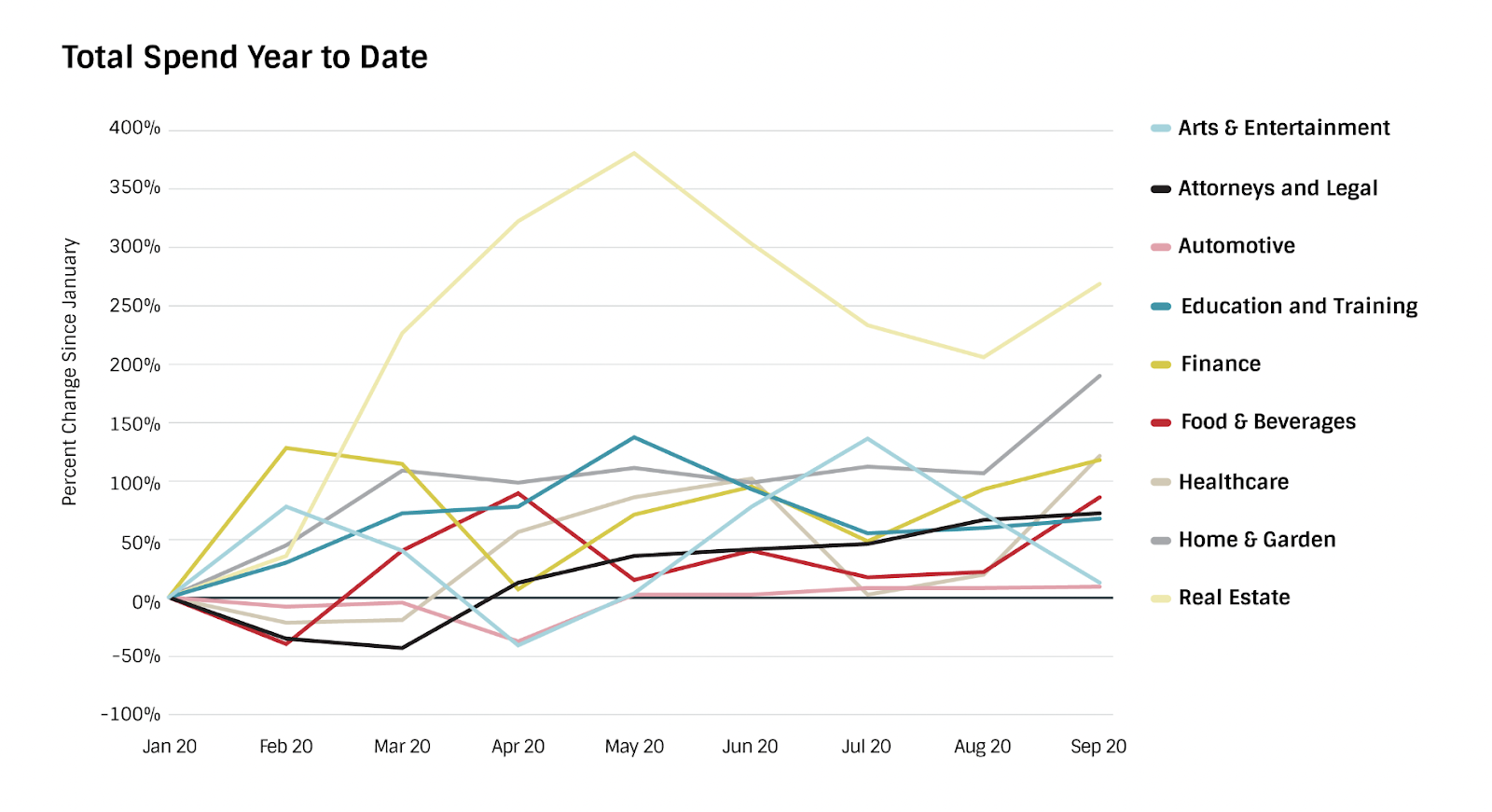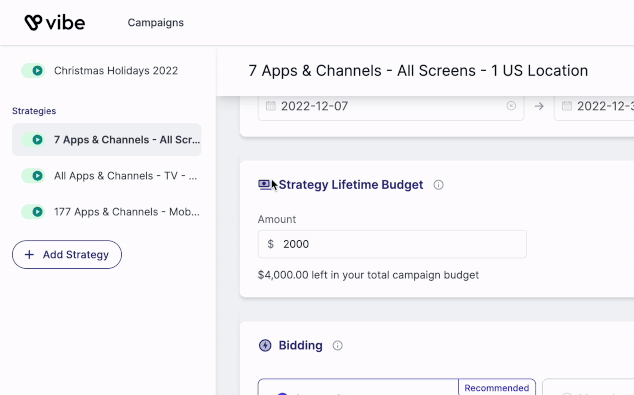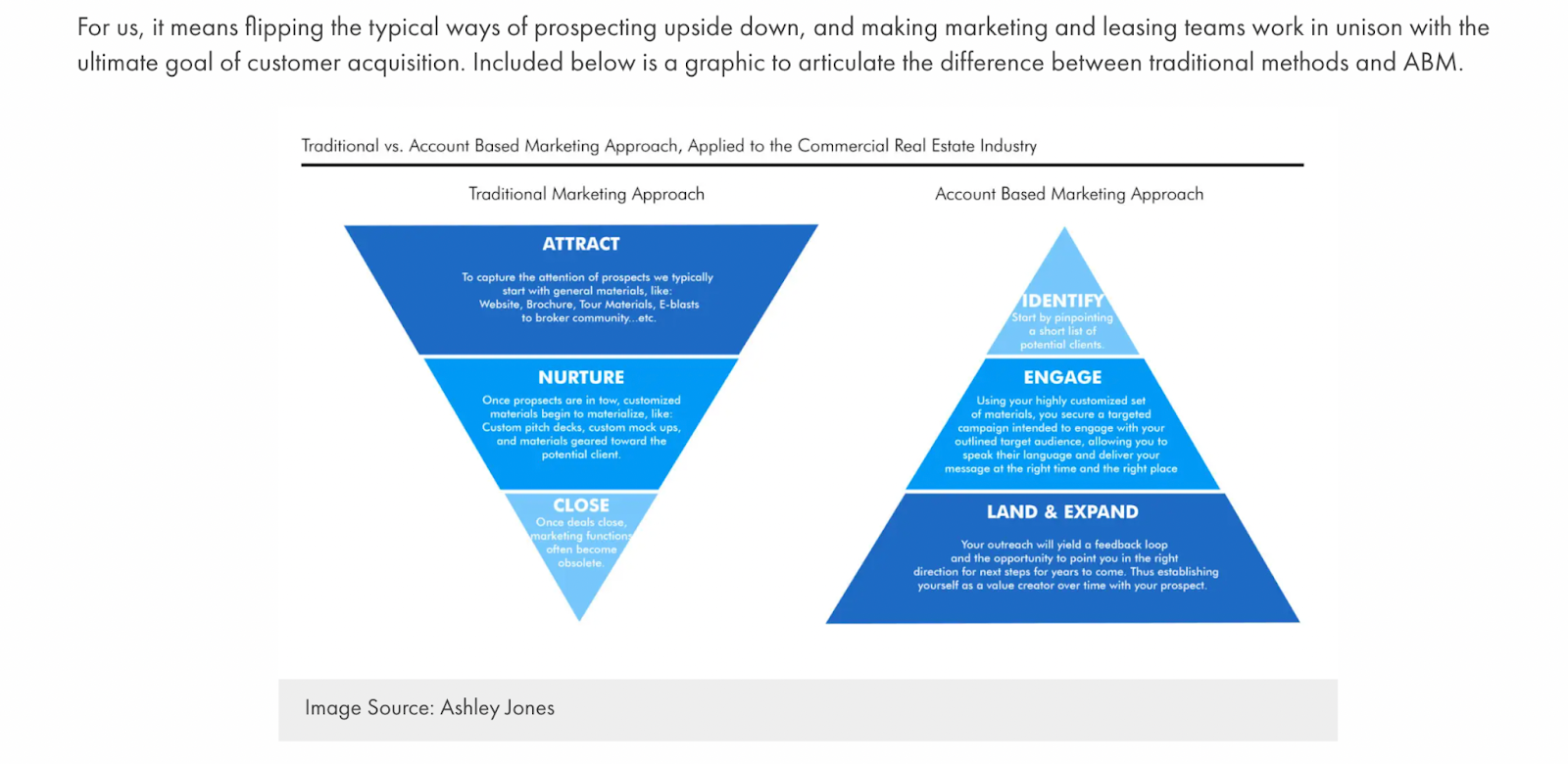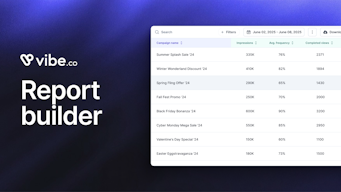Bringing new life to commercial real estate, with CTV
Few industries have dealt with as much pandemic-related upheaval as commercial real estate, as offices, stores, and restaurants shut down or moved their business primarily online. And while the world begins to adapt to a new normal, scars remain. Luckily, savvy real estate developers and marketers were some of the first to explore new ways to do business in a digital-first ecosystem where stakeholders have come to expect highly personalized, experientially rich environments.
On the development side, these expectations are translated into exponential demand for mixed-use constructions with robust digital customer service capabilities, while on the advertising side, real estate marketers have come to rely much more heavily on customizable digital tools and video.
A Retail Revolution
The retail real estate industry was already in the throes of some pretty major growing pains when the world started shutting down. Add office and restaurant disruptions to the mix, and commercial real estate as a whole had to start swimming fast… or sink. How? By prioritizing flexible spaces allowing commercial tenants to test concepts early and often; think pop-ups, collaborative spaces, drop locations, and mixed use developments.
According to a recent McKinsey study on the future of commercial real estate, this trend has become ubiquitous: "You’re doomed if you’re doing single purpose, single-use spaces, and even single-use buildings, because you don’t get as much value out of the real estate.The future of real estate is no longer about delivering four walls to tenants. Instead, it’s about creating a unique, personalized customer experience that fosters meaningful interactions, collaboration, and productivity. Delivering this will require a unique combination of capabilities that seamlessly integrate across the physical and digital realms.”
Meanwhile, after much hand-wringing, commercial real estate advertisers are now early - and successful - adopters of new channels and strategies like Connected TV advertising, concierge app development, hyper-local digital engagement, and experiential marketing. These tools are especially important as mixed-use developments, a notoriously difficult product to advertise, become ubiquitous, and advertisers increasingly turn to a “showing” storytelling style instead of “telling” thanks to increasingly simple-to-execute video campaigns.
Let’s have a look at how digital marketing tools have developed to keep up!
The Revolution Is Already Televised
The numbers are clear: in 2019, only 22% of US households owned a connected device; today, a whopping 94% of households have “cut the cord” to stream their favorite programs on Connected TVs, phones, or tablets. While this shift might seem minor from a consumer perspective (after all, watching TV is still just watching TV), the effect on advertisers is profound. Because CTV advertising is a digital channel, operating with CPMs, pixels, Google Analytics, and other typically digital accouterments, it has managed to crack the TV advertising market wide open and radically democratize access to a notoriously expensive medium.
Today, advertisers of all sizes can upload simple 15 or 30 second long videos, set their budget, maximum CPM (Cost Per Thousand Impressions), target audiences, and deliver campaigns programmatically across hundreds of channels. See for yourself!
A new digital offering is especially welcome at a time when Apple’s ATT (App Tracking Transparency) framework has hobbled thousands of mobile advertisers’ campaign targeting and measurement efforts and Google’s 3rd party cookie deprecation looms (for real this time). Because Connected Television ad platforms target users by household IP, they are able to segment and find audiences to match dozens of criteria including demographic, socio-economic, interest, location, and more.
Meanwhile, CTV inventory is growing at breakneck speed, as AVOD (Ad Supported On Demand Programming) and FAST (Free Ad Supported TV) channels explode in number. “This will trigger a boom in niche streaming services with very specific audiences, allowing marketers to run extremely precise ads with tailored campaigns that will lead to great ROI through conversion,” says adtech veteran Gijsbert Pols.
But how can this new digital frontier help commercial real estate stakeholders? Let’s take a closer look.
How To Meet Retail Challenges with CTV
One of the most exciting shifts in TV advertising, and the main reason CTV is so appealing to real estate marketers, is its ability to digitally target TV audiences by geo-location, household income, and interest. In fact, granular targeting is the main reason OTT/CTV advertising spend shot up by 269% at the end of September 2021 compared to spend in January 2022.
According to a recent Simpli.fi report, real Estate advertisers increased spend on OTT/CTV ads as the year progressed, ending September with a growth of 643% increase compared to January.

Once audiences and targets are clearly defined, it’s especially important - and a key capability of CTV advertising - to test multivariate campaigns and adjust strategies accordingly. With a platform like Vibe.co, for example, advertisers can easily define their campaign dates and budgets on the front end, and segment that campaign into as many ad sets as they need to optimize their strategy.

Advertisers will then receive real-time reports detailing campaign results by channel, audience type, date, etc., which will allow them to edit and highlight their video assets according to specific user preferences. More than ever, marketers are relying on video to establish trusting, long-term relationships with their stakeholders and to bring new experiences to life. After all, one of the main reasons pushing retailers to return to brick and mortar locations is shoppers’ desire to experience deeper connections with their brands, and how better to connect with your audience than with un-skippable videos delivered to engaged audiences, next to long-form premium content? That’s what TV is best at!
Ashley Jones, of Aquila Consulting, recently described the ways in which the sales force on her team is completely rethinking their marketing funnel approach, by placing audience identification and engagement at the top (see diagram below), which is exactly what an effective CTV campaign, divided into audience-specific ad sets, can achieve at scale!

The future looks bright for commercial real estate marketers willing to embrace new technology at a time when consumers are most hungry for it.


